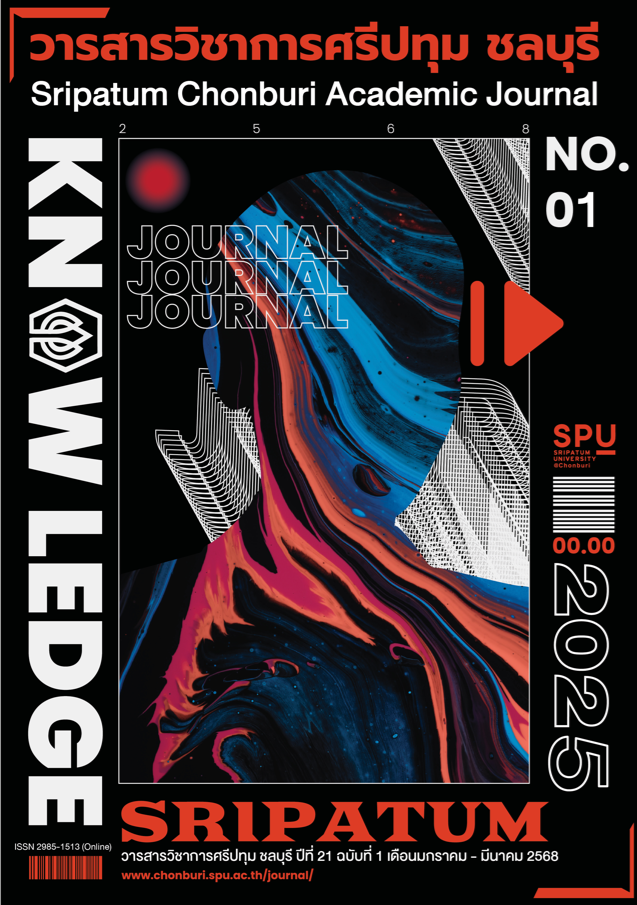LEGAL PROBLEMS AND OBSTACLES CONCERNING ON ENFORCEMENT OF THE PREVENTION AND SUPPRESSION OF TORTURE AND ENFORCED DISAPPEARANCE ACT B.E.2565
Keywords:
Prevention and Suppression, Torture, Enforced DisappearanceAbstract
This academic article aims to examine the issues and obstacles in enforcing the Prevention and Suppression of Torture and Enforced Disappearance Act of 2022, especially in relation to the interpretation of key terms used in the law, such as “torture” and “inhumane or degrading treatment.” These terms' interpretations have become a point of contention, particularly with respect to individuals deprived of liberty. The efforts to prevent torture and enforced disappearances, as well as the damages resulting from them, rely on fundamental legal principles, including the submission of reports and the collection of evidence to prove these human rights violations. A study of the Prevention and Suppression of Torture and Enforced Disappearance Act of 2022 reveals that it does not provide a clear definition of torture, inhumane or degrading treatment, or the consequences of such actions in relation to individuals deprived of liberty. This ambiguity raises significant concerns, especially when it comes to the enforcement of laws related to the prevention of these acts. Therefore, an accurate interpretation of these terms is crucial to ensuring proper legal protections. Furthermore, apart from the Prevention and Suppression of Torture and Enforced Disappearance Act of 2022, it stipulates penalties for acts of torture and enforced disappearances. However, determining the nature and extent of damages caused by such acts remains a matter of debate, as the law lacks clarity in defining what constitutes torture and what acts fall under the category of inhumane or degrading treatment. From the judicial perspective, it is essential to clarify the terms mentioned in section 226, 226/1 specifically the concept of “torture,” which includes actions that cause severe physical or mental pain or suffering. Additionally, it is critical to determine the level of suffering caused by such acts to ensure that law enforcement and judicial bodies can effectively uphold the provisions of the Royal Decree. In conclusion, a more precise interpretation of the legal terminology surrounding torture and inhumane treatment is needed to strengthen the enforcement of laws preventing human rights violations. This will ensure that individuals' rights are safeguarded and that perpetrators of torture and enforced disappearances are held accountable under the law.
References
กรมองค์การระหว่างประเทศ. (2551). ปฏิญญาสากลว่าด้วยสิทธิมนุษยชน (Universal Declaration of Human Rights). กรุงเทพฯ: กรมองค์การระหว่างประเทศ กระทรวงการต่างประเทศ.
นันทพร กันเฉย. (2559). ความรับผิดทางอาญาของผู้บังคับบัญชากรณีผู้ใต้บังคับบัญชาบังคับให้บุคคลสูญหาย. วิทยานิพนธ์นิติศาสตรมหาบัณฑิต สาขากฎหมายอาญา, คณะนิติศาสตร์ มหาวิทยาลัยธรรมศาสตร์.
นันท์ชนก วงษ์สมุทร์. (2562). สาวซาอุฯ : นักสิทธิมนุษยชนเชื่อกระแสโซเชียลทั่วโลกช่วยเปลี่ยนใจรัฐบาลไทย มอบ UNHCR ดูแล (ออนไลน์). เข้าถึงได้จาก:
https://www.bbc.com/thai/thailand-46790916 [2567, 27 กันยายน].
พระราชบัญญัติป้องกันและปราบปรามการทรมานและการกระทำให้บุคคลสูญหาย พ.ศ.2565. (2565). ราชกิจจานุเบกษา. เล่ม 139 (ตอนที่ 66 ก), หน้า 43.
เพชรณพัฒน์ ศรีวุทธิยประภา. (2564). อนุสัญญาระหว่างประเทศว่าด้วยการคุ้มครองบุคคลทุกคนจากการบังคับให้หายสาบสูญและการเข้าร่วมเป็นภาคีของประเทศไทย (ออนไลน์). เข้าถึงได้จาก: https://law.mfu.ac.th/law-news/law-detail/detail/News/6856.html [2567, 27 กันยายน].
Tønnessen, L. (2016). CMI Report: Women’s Activism in Saudi Arabia: Male Guardianship and Sexual Violence. Bergen: Chr. Michelsen Institute.
Downloads
Published
Issue
Section
License
Copyright (c) 2024 Sripatum University Chonburi Campus

This work is licensed under a Creative Commons Attribution-NonCommercial-NoDerivatives 4.0 International License.
บทความทุกบทความเป็นลิขสิทธิ์ของวารสารวิชาการศรีปทุม ชลบุรี



